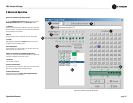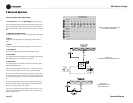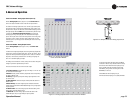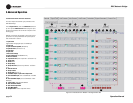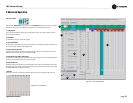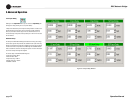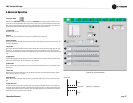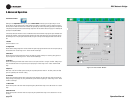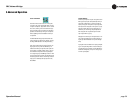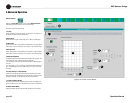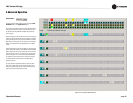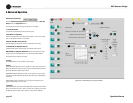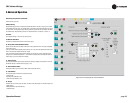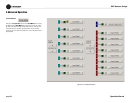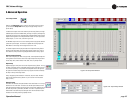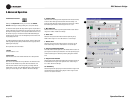
DBC Network Bridge
Operation Manual page 59
5 Advanced Operation
Priority Ducking
Enforces a priority order of open microphones such
that high priority inputs duck (attenuate) lower-pri-
ority inputs. Additionally, a maximum number of
equal-priority open microphones may be specified.
Each input can be assigned a Priority from 1 (high-
est) to 8 (lowest). When an input gate opens, it is
allowed to pass according to the priority that has
been assigned and is dependent upon the other
open inputs within its group.
Keeping the number of open microphones to a min-
imum reduces background noise while allowing a
higher gain before feedback for improved intelligi-
bility.
Input gates must be enabled for all inputs participat-
ing in Priority Ducking within an Automix Group. If
an input belongs to more than one Auto-Mix Group,
it MUST be the highest priority in all of the groups
in which it participates.
5.3.5 Automixer
Automatic mixers allow 'hands-free' mixing that
minimizes many of the undesirable effects of using
multiple microphones. Applications such as confer-
ence rooms, training rooms and boardrooms typi-
cally implement many microphones for individual
speakers. Simultaneously mixing all microphones
with acceptable gain before feedback manually is
not possible.
The DBC Network Bridge implements three auto-
mixing functions to address this situation: Priority
Ducking, NOM Attenuation and Adaptive Gating.
Each of the sixteen Input Processing Sections can
be grouped into any of 32 Auto-Mix Groups. In
addition to the Group assignment, each Input Sec-
tion includes a separate 'Enable' control. This con-
trols whether the respective channel participates
in its assigned groups AutoMixing functions. There
are group Automixing controls and individual Input
Processing Section controls. Automixing’s effect on
input gain is metered by the Input Dynamic Cut/
Boost Meter.



